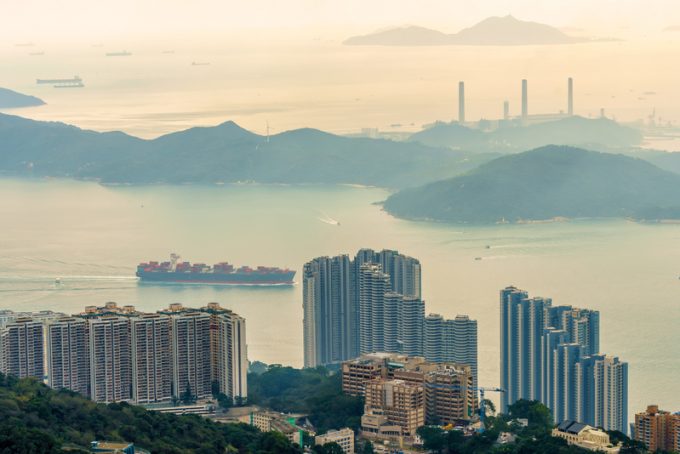Grape demand: carriers line up for a bite as South African export season begins
South Africa’s grape export season has begun, and ocean carriers are lining up for a ...
WMT: ON A ROLLDSV: SLOW START AAPL: LEGALUPS: MULTI-MILLION PENALTY FOR UNFAIR EARNINGS DISCLOSUREWTC: PUNISHEDVW: UNDER PRESSUREKNIN: APAC LEADERSHIP WATCHZIM: TAKING PROFITPEP: MINOR HOLDINGS CONSOLIDATIONDHL: GREEN DEALBA: WIND OF CHANGEMAERSK: BULLISH CALLXPO: HEDGE FUNDS ENGINEF: CHOPPING BOARD
WMT: ON A ROLLDSV: SLOW START AAPL: LEGALUPS: MULTI-MILLION PENALTY FOR UNFAIR EARNINGS DISCLOSUREWTC: PUNISHEDVW: UNDER PRESSUREKNIN: APAC LEADERSHIP WATCHZIM: TAKING PROFITPEP: MINOR HOLDINGS CONSOLIDATIONDHL: GREEN DEALBA: WIND OF CHANGEMAERSK: BULLISH CALLXPO: HEDGE FUNDS ENGINEF: CHOPPING BOARD

China’s quarantine rules for seafarers are set to cause a big drop in Pearl River Delta feeder capacity in the run-up to Chinese New Year (CNY) in February.
Both ONE and Hapag-Lloyd have issued advisories warning of disruption from late December to mid-February, after feeder operators announced service suspensions due to a lack of crew.
Hapag-Lloyd said: “This suspension is caused by the Covid-19 quarantine requirement for ship crews plying between South China and Hong Kong upon their return from the CNY 2022 holidays.
“Taking this situation into consideration, we will temporarily suspend cargo acceptance to South China, with final destination under the Pearl River Delta area and Fuzhou, until further notice. However, we will continue to accept cargo on mainline services to main ports such as Hong Kong, Yantian, or Shekou.”
Akhil Nair, VP global carrier management and ocean strategy at Seko Logistics, said it was likely only imports to China would be affected.
“Which makes sense, as they don’t want arrivals during CNY when booked from overseas, as these would all simply accumulate at transhipment ports,” he told The Loadstar. “With declining free-time from terminals that are already congested, I would assume this is a prudent move.”
Furthermore, he said, carriers would be able to keep exports flowing because “most of the main carriers are able to accept cargo via terminals such as Nansha”.
However, Lars Jensen, CEO of Vespucci Maritime, said the disruption to feeder services could “give rise to a number of ripple effects.”
He explained: “Cargo to/from the smaller ports might see an earlier surge than usual [prior to CNY]. Some of this might be redirected onto land transport once the feeder capacity declines, which can give rise to a shortage of capacity on the land side, including for shippers only using the large ports in the region.”
Indeed, a similar feeder crunch took place last year, with forwarders pointing out the potential disruption to intra-Asia shipping, the rising costs of truck moves, and the difficulties for much-needed repositioning of empty containers.
Shipping lines were also quick to sound alarm bells, warning it would be difficult to meet both import and export demand from Hong Kong and Shenzhen.
Nevertheless, in addition to the South China barge market, shipping stakeholders have raised red flags over China’s increasingly extreme zero-Covid policy and the ramifications for normal crew changes.
For example, China has reportedly implemented quarantines of up to seven weeks for returning seafarers, while ships with foreign crews need to wait two weeks to enter a port.
Comment on this article